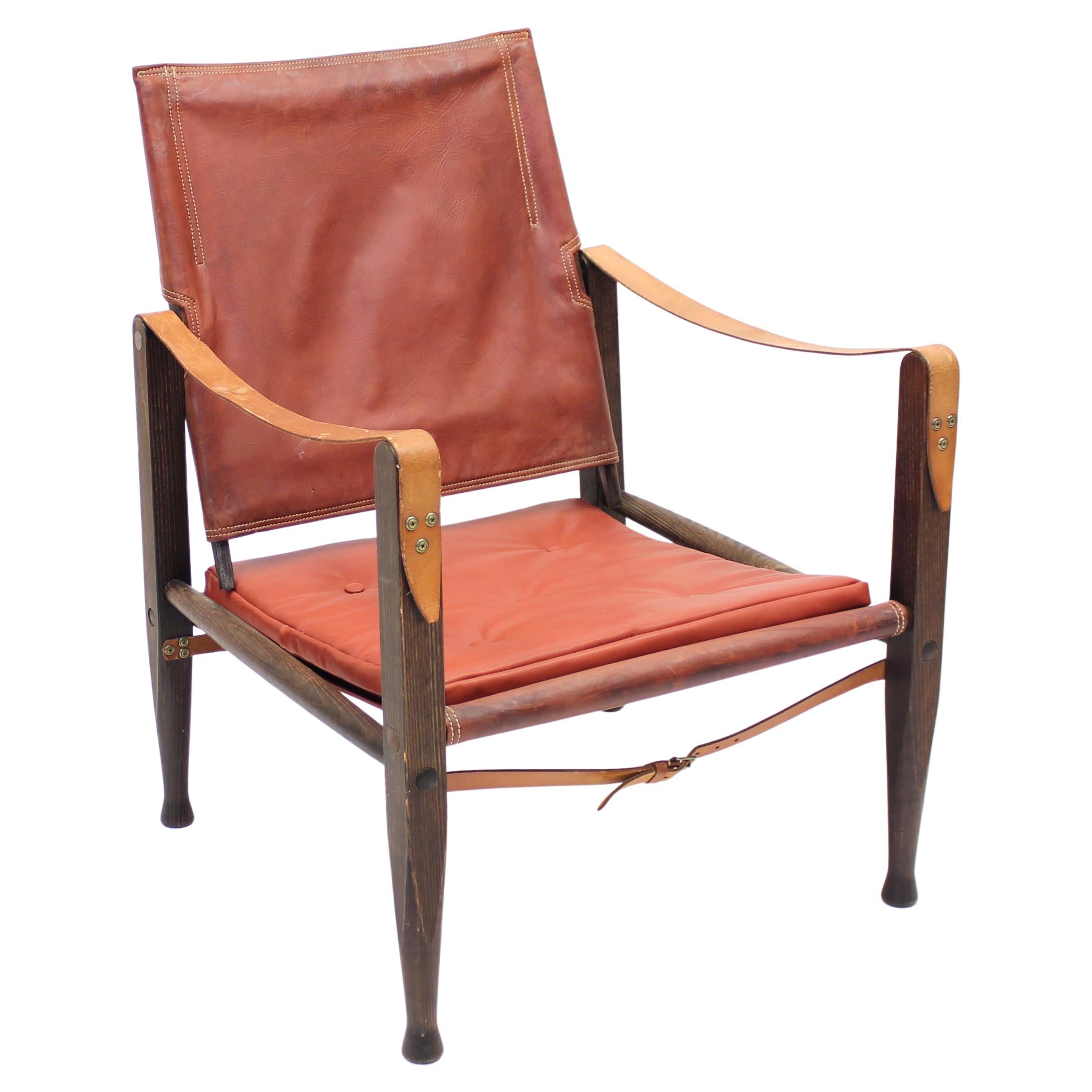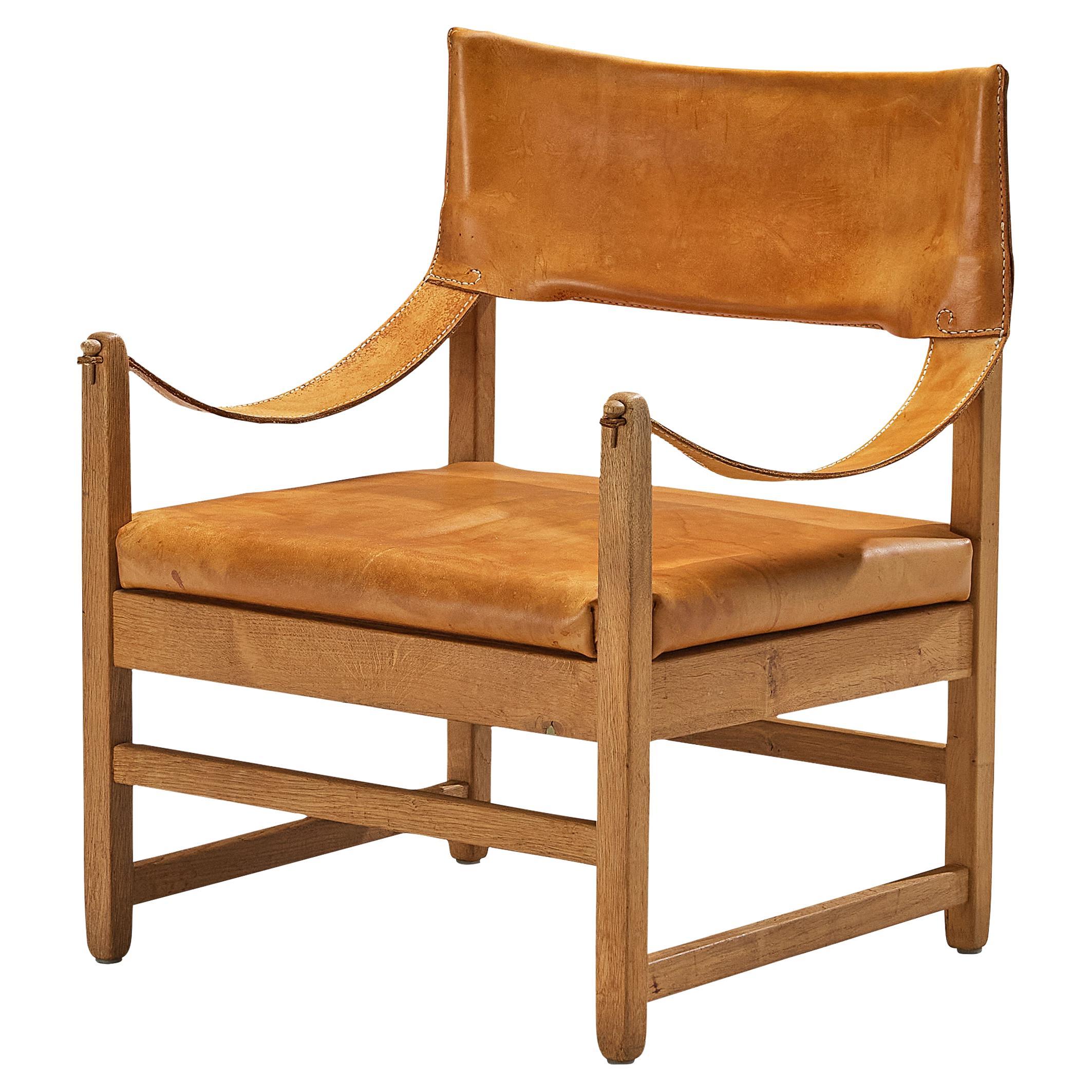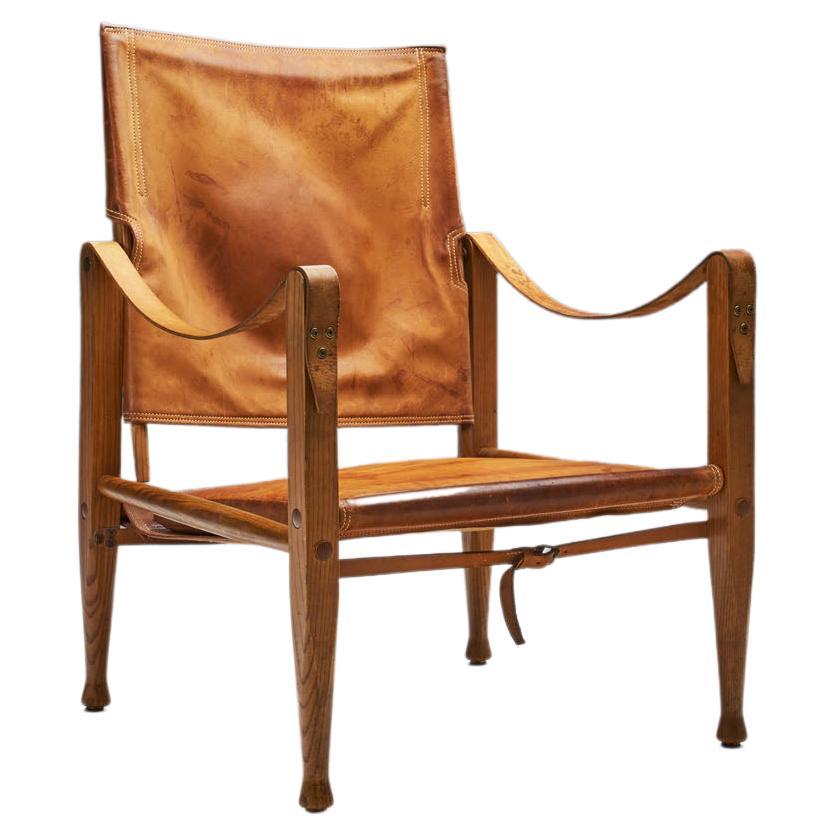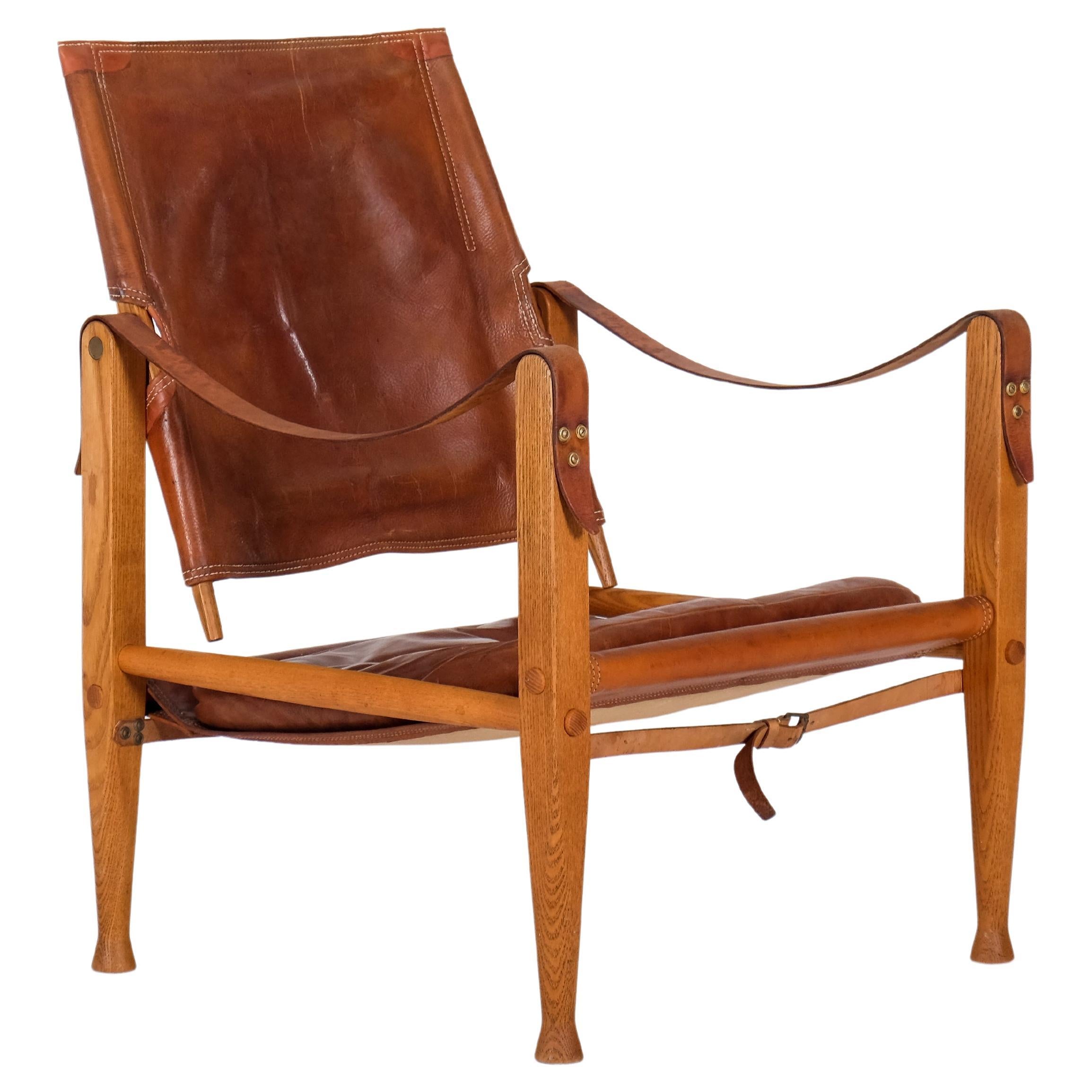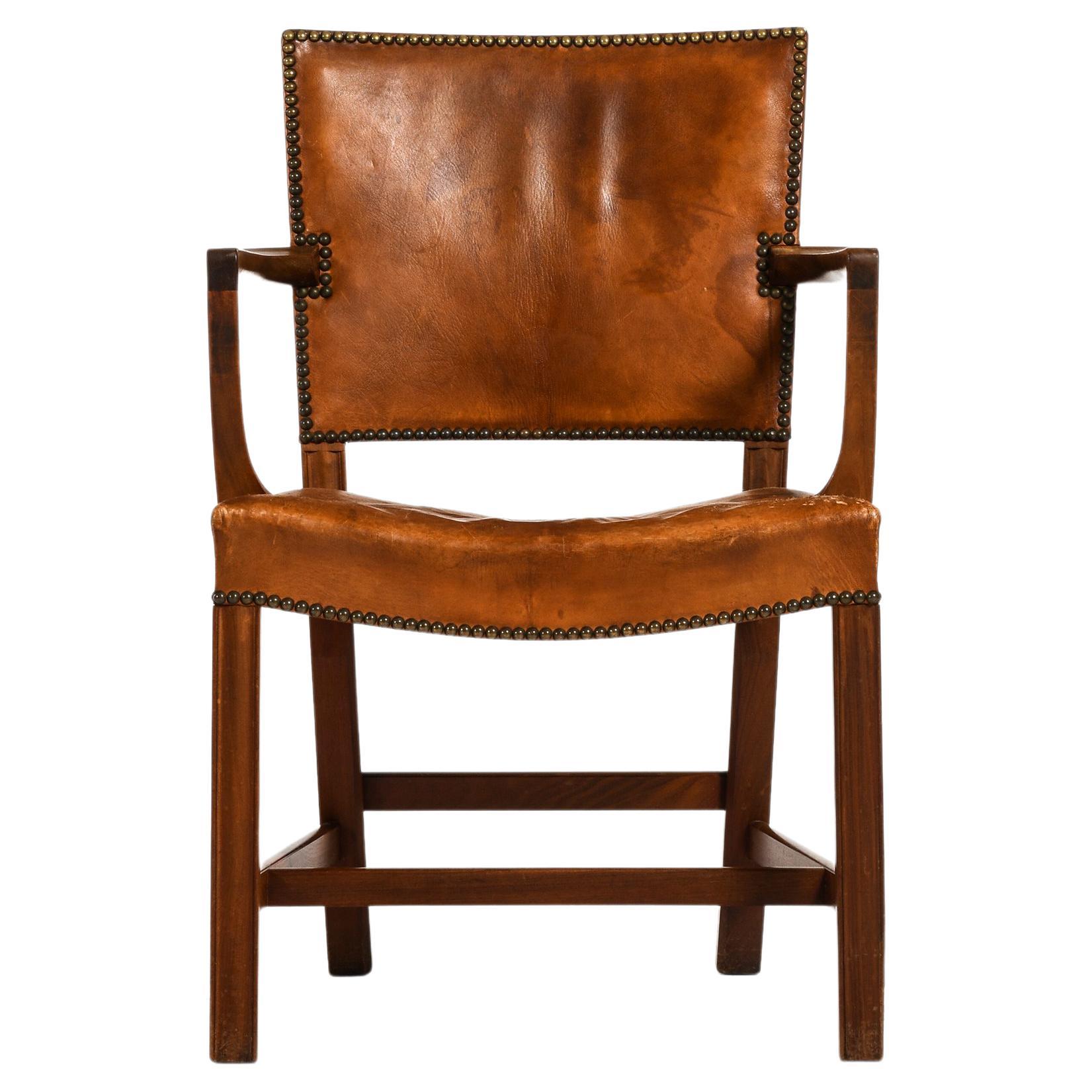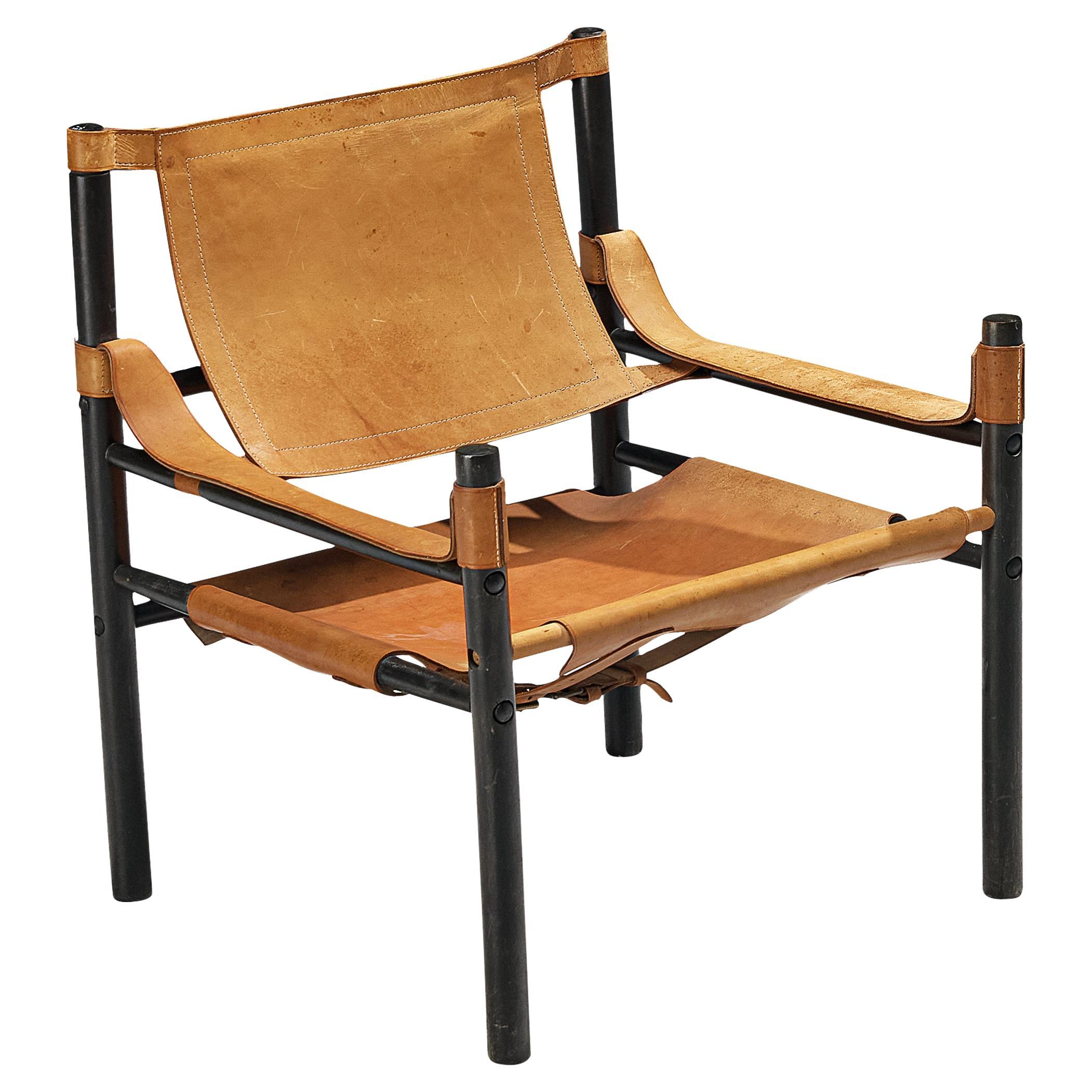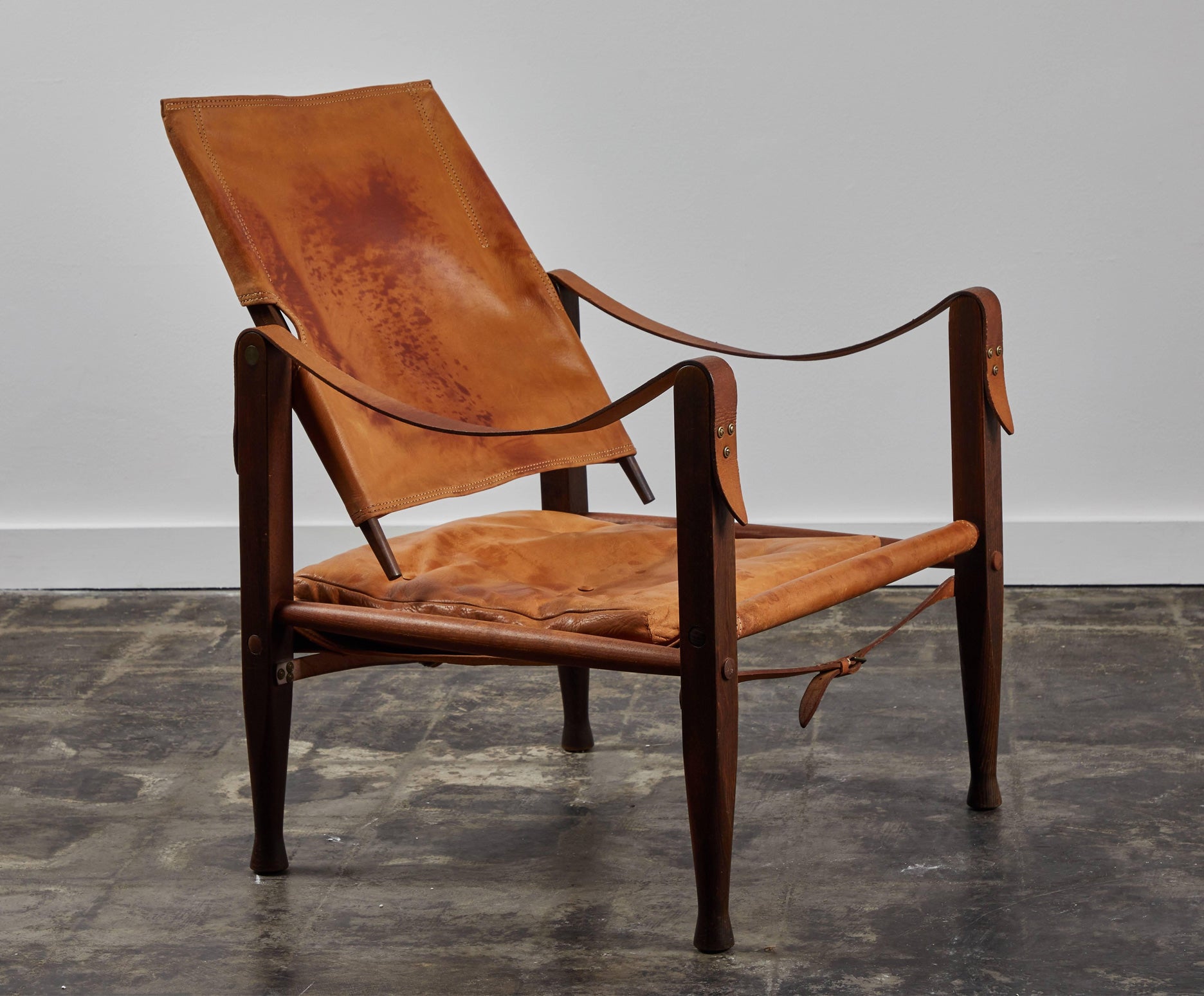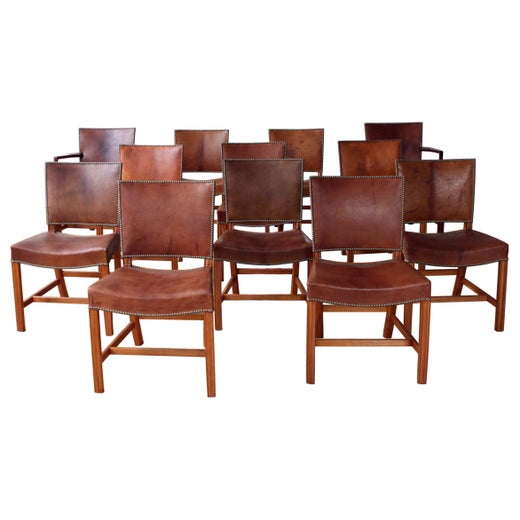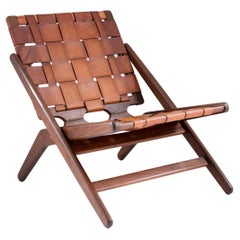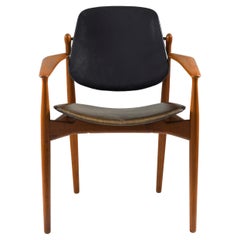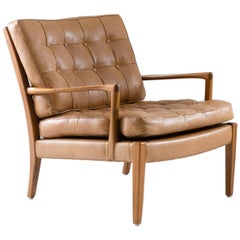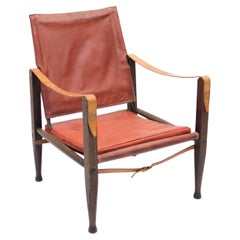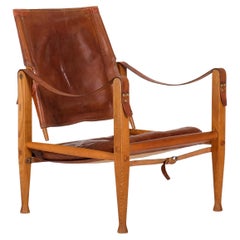Safari Chair by Kaare Klindt in Cognac Leather
About the Item
- Creator:Kaare Klint (Designer),Rud Rasmussen (Manufacturer)
- Design:
- Dimensions:Height: 31.89 in (81 cm)Width: 22.84 in (58 cm)Depth: 22.84 in (58 cm)Seat Height: 12.6 in (32 cm)
- Style:Mid-Century Modern (Of the Period)
- Materials and Techniques:
- Place of Origin:
- Period:
- Date of Manufacture:1960s
- Condition:Wear consistent with age and use.
- Seller Location:Karlstad, SE
- Reference Number:Seller: 17-1811stDibs: LU172027849423
Safari Chair
The Safari chair, created by legendary Danish designer Kaare Klint (1888–1954) in 1933, has roots in one of the earliest known examples of do-it-yourself furniture. Specific accounts vary, but Klint was inspired by an image of a Roorkhee chair (perhaps spotted in a travel guide) being used on an African safari.
Named for the headquarters of the Indian Army Corps of Engineers in Roorkhee, a city in Northern India, the Roorkhee chair was a military campaign chair that was popular with British officers during World War I. The chair’s maker, who was tasked in the late 19th century with developing lightweight, adaptable seating that could be quickly taken apart for the British military, remains unknown. The Roorkhee’s seat was made of stretched canvas while the armrests were leather straps, and it was probably the design’s practical simplicity that appealed to Klint, who is celebrated for having incorporated rigorous research on precedents, proportions and materials into his designs.
At the time of the Safari chair’s inception, Klint — whose start in design owes to the influence of his father, architect P.V. Jensen Klint, as well as a furniture-making apprenticeship at age 15 — was already playing a prominent role in the trajectory of Danish design. He was a professor at the Royal Danish Academy of Fine Arts in furniture design (a department he founded in 1924), where his students included Hans Wegner, Ole Wanscher and others. Through his own remarkable designs as well as his teaching, Klint became known as the “father of Danish modernism.”
Although Klint’s interpretation of the clever military campaign chair design is the most faithful to the original, other modern chairs based on the Roorkhee include Le Corbusier’s Basculant chair and the Wassily chair designed by Marcel Breuer.
The Safari chair’s flexible structure sees an integration of loose mortise-and-tenon joints that are strengthened when someone sits in it. As compared to vintage versions of the Roorkhee, it’s clear that Klint made important changes in designing his chair, such as an angling of the seat that better supports ergonomics. The chair was originally produced by Rud Rasmussen Snedkerier and exhibited at the Copenhagen Cabinetmakers’ Guild Exhibition in 1933.
Today, the solid wood Safari — made of Danish ash with a canvas or ox-hide seat and saddle-leather armrests — is manufactured by Carl Hansen & Søn. A seat cushion and footstool are available, and like its lightweight 1930s-era prototype, the chair can be assembled and taken apart without the use of tools.
Kaare Klint
Architect, teacher and furniture designer Kaare Klint is among the most important figures in Scandinavian modernism. Widely recognized as the father of modern Danish furniture, Klint sought to pay homage to historical furniture styles and prized functionality as essential to designing for modern living. He established the design school at Copenhagen’s Royal Danish Academy of Fine Arts, and his students became mid-century legends of cabinetry and furniture-making.
Klint prioritized functionalism and drew on an array of influences in his own work. Furniture experts will observe the influence of 18th-century English seating in his Red chair, while Klint’s iconic Safari chair had roots in campaign furniture. The other exemplary chairs, sofas and tables for which he is known bear the mark of Thomas Chippendale and Biedermeier furniture as well as Greek and Roman forms.
Klint's father was Peder Vilhelm Jensen-Klint, a formidable architect of his day. The younger Klint initially followed in his father’s footsteps, studying under him as well as distinguished architect Carl Petersen. Alongside Danish architect Ivar Bentsen, he headed the renovation of the Designmuseum Denmark in Copenhagen from 1920–26 (Klint also furnished the institution as part of the project). Around the same time, Klint helped found the furniture design school at the Royal Danish Academy. The impact of his role as an instructor there cannot be overstated — he mentored such esteemed cabinetmakers and furniture designers as Børge Mogensen, Hans Wegner and Ole Wanscher.
A prominent advocate of ergonomics, Klint valued comfort and functionality over style. Painstaking research went into each piece of sophisticated yet wholly unadorned furniture he designed, as he endeavored to build structures that took into consideration human proportions and scale. And like the Shakers, Klint believed that quality craftsmanship and good materials were integral to the design of durable furniture that was free of embellishment.
The humble grace of Klint’s style characterizes legendary seating designs that continue to charm today’s legions of mid-century modern enthusiasts. His Safari chair, Faaborg chair, Ravenna armchair and Propeller stool — as well as most of the seating created by Danish modernists generally — have warmed interiors and influenced furniture designers all over the world.
Find vintage Kaare Klint furniture and other Scandinavian modern furniture on 1stDibs.
- ShippingRetrieving quote...Shipping from: Karlstad, Sweden
- Return Policy
More From This Seller
View All20th Century Danish Mid-Century Modern Chairs
Leather, Teak
20th Century Danish Mid-Century Modern Lounge Chairs
Leather, Walnut
20th Century Danish Mid-Century Modern Lounge Chairs
Leather, Teak
20th Century Swedish Scandinavian Modern Lounge Chairs
Teak, Leather
20th Century Swedish Mid-Century Modern Chairs
Leather, Oak
20th Century Norwegian Scandinavian Modern Lounge Chairs
Leather, Rosewood
You May Also Like
Mid-20th Century Danish Scandinavian Modern Armchairs
Leather, Oak
Vintage 1960s Danish Scandinavian Modern Armchairs
Leather, Oak
Vintage 1930s Danish Scandinavian Modern Chairs
Leather, Wood
Vintage 1960s Danish Scandinavian Modern Armchairs
Leather
20th Century Danish Scandinavian Modern Armchairs
Mahogany, Leather
Vintage 1960s Argentine Mid-Century Modern Armchairs
Brass
